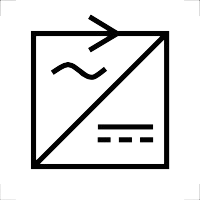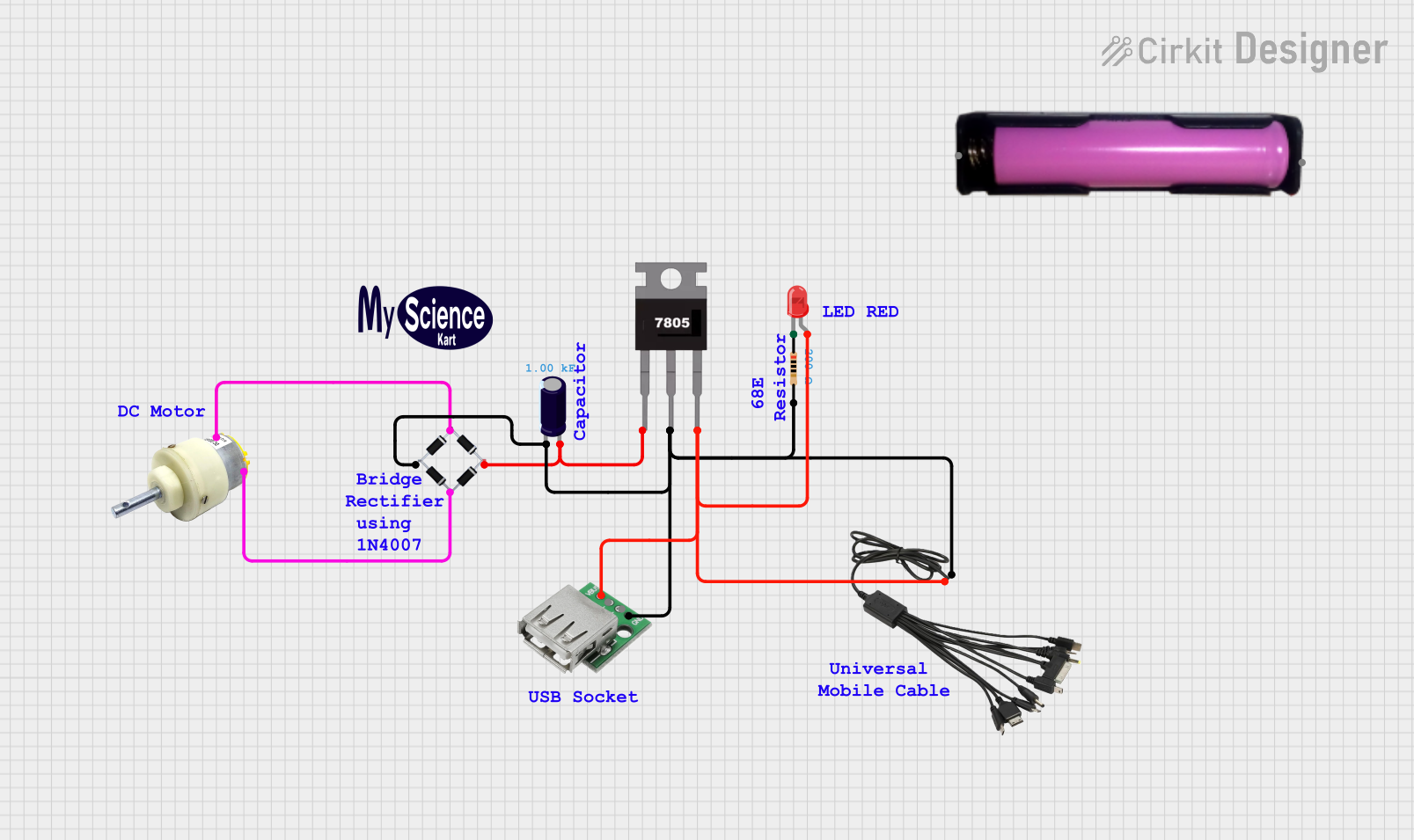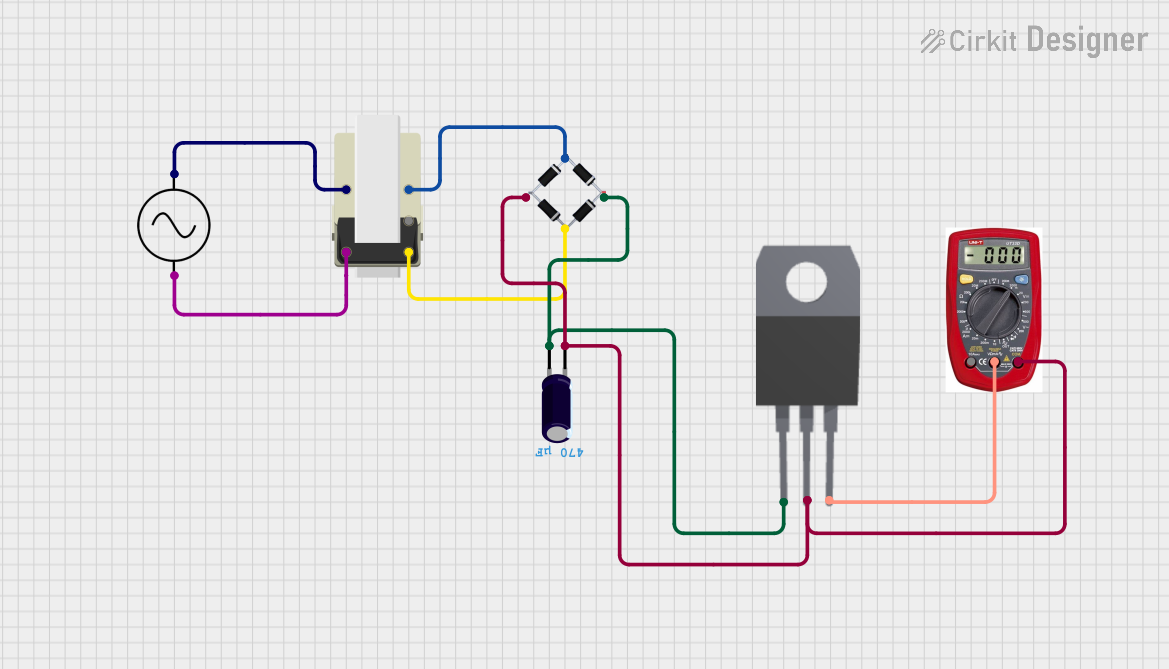
How to Use AC to DC: Examples, Pinouts, and Specs

 Design with AC to DC in Cirkit Designer
Design with AC to DC in Cirkit DesignerIntroduction
An AC to DC converter is an essential electronic component that transforms alternating current (AC) into direct current (DC). This conversion is crucial for powering various electronic devices and systems that require a stable DC voltage. AC to DC converters are commonly found in power supplies for consumer electronics, industrial equipment, and automotive applications.
Explore Projects Built with AC to DC

 Open Project in Cirkit Designer
Open Project in Cirkit Designer
 Open Project in Cirkit Designer
Open Project in Cirkit Designer
 Open Project in Cirkit Designer
Open Project in Cirkit Designer
 Open Project in Cirkit Designer
Open Project in Cirkit DesignerExplore Projects Built with AC to DC

 Open Project in Cirkit Designer
Open Project in Cirkit Designer
 Open Project in Cirkit Designer
Open Project in Cirkit Designer
 Open Project in Cirkit Designer
Open Project in Cirkit Designer
 Open Project in Cirkit Designer
Open Project in Cirkit DesignerTechnical Specifications
Key Technical Details
| Parameter | Value |
|---|---|
| Input Voltage | 100-240V AC |
| Output Voltage | 5V, 12V, 24V DC (varies) |
| Output Current | 1A, 2A, 5A (varies) |
| Power Rating | 5W, 12W, 24W (varies) |
| Efficiency | 85-95% |
| Ripple & Noise | < 50mV |
| Operating Temp. | -20°C to 70°C |
| Storage Temp. | -40°C to 85°C |
| Humidity | 0% to 95% RH (non-condensing) |
Pin Configuration and Descriptions
| Pin Number | Pin Name | Description |
|---|---|---|
| 1 | AC IN | AC input terminal (L) |
| 2 | AC IN | AC input terminal (N) |
| 3 | GND | Ground terminal |
| 4 | DC OUT+ | Positive DC output terminal |
| 5 | DC OUT- | Negative DC output terminal |
Usage Instructions
How to Use the Component in a Circuit
- Safety First: Ensure the power is turned off before making any connections.
- Connect AC Input: Connect the AC input terminals (L and N) to the AC power source.
- Connect DC Output: Connect the DC output terminals (DC OUT+ and DC OUT-) to the load or device that requires DC power.
- Grounding: Ensure the ground terminal (GND) is properly connected to avoid any electrical hazards.
- Power On: Once all connections are secure, turn on the AC power source.
Important Considerations and Best Practices
- Voltage Rating: Ensure the input voltage matches the converter's rated input voltage.
- Current Rating: Do not exceed the maximum output current rating to avoid damage.
- Heat Dissipation: Provide adequate ventilation or cooling to prevent overheating.
- Polarity: Double-check the polarity of the DC output connections to avoid damaging the connected device.
- Isolation: Use isolation techniques if the converter is part of a sensitive or critical system.
Troubleshooting and FAQs
Common Issues Users Might Face
No Output Voltage:
- Solution: Check the AC input connections and ensure the power source is active. Verify that the converter is not in a fault condition.
Overheating:
- Solution: Ensure proper ventilation and cooling. Check if the load exceeds the converter's power rating.
Output Voltage Fluctuations:
- Solution: Verify the stability of the AC input voltage. Check for any loose connections or excessive load.
Noise and Ripple:
- Solution: Use additional filtering capacitors at the output. Ensure the converter is not operating near its maximum load capacity.
FAQs
Q1: Can I use an AC to DC converter with an Arduino UNO?
- A1: Yes, you can use an AC to DC converter to power an Arduino UNO. Ensure the output voltage matches the Arduino's input voltage requirements (typically 5V or 9V).
Q2: What happens if I reverse the polarity of the DC output?
- A2: Reversing the polarity can damage the connected device. Always double-check the polarity before powering on.
Q3: How do I know if the converter is faulty?
- A3: If there is no output voltage despite correct connections and a stable input, the converter may be faulty. Check for any visible damage or overheating signs.
Q4: Can I use the converter in a high-humidity environment?
- A4: Most converters are designed to operate in non-condensing environments. Ensure the humidity level is within the specified range (0% to 95% RH).
Example Code for Arduino UNO
Here is an example of how to use an AC to DC converter to power an Arduino UNO and blink an LED:
// Example code to blink an LED using Arduino UNO powered by an AC to DC converter
const int ledPin = 13; // Pin number for the LED
void setup() {
pinMode(ledPin, OUTPUT); // Set the LED pin as an output
}
void loop() {
digitalWrite(ledPin, HIGH); // Turn the LED on
delay(1000); // Wait for 1 second
digitalWrite(ledPin, LOW); // Turn the LED off
delay(1000); // Wait for 1 second
}
Note: Ensure the AC to DC converter's output voltage matches the Arduino UNO's input voltage requirements.
This documentation provides a comprehensive guide to understanding, using, and troubleshooting an AC to DC converter. Whether you are a beginner or an experienced user, following these guidelines will help you effectively integrate this component into your projects.